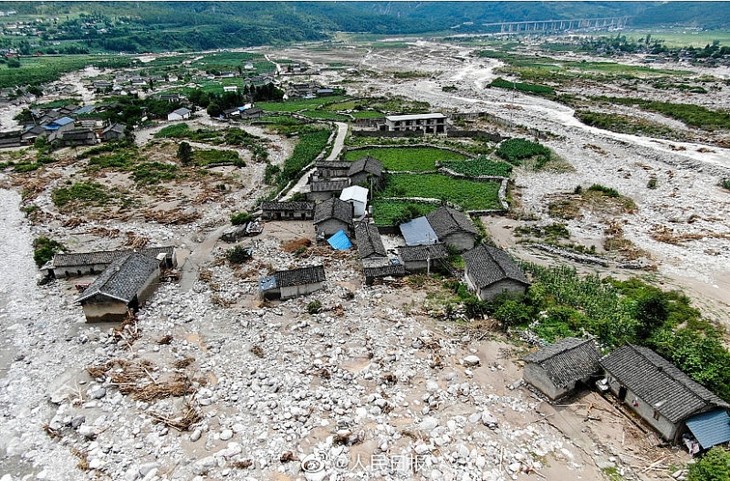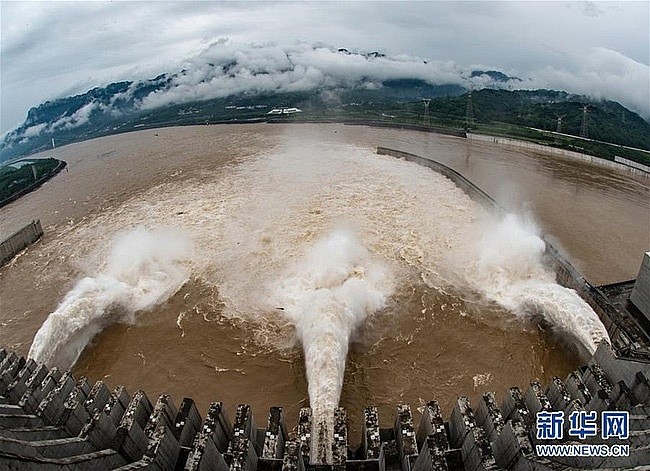(VOVWORLD) - China is coping with devastating flooding, which has affected the livelihoods of millions of people. On top of the effects of climate change, experts are blaming China’s management of upstream dams.

Houses and roads are destroyed by flash floods. (Photo: People's Daily)
|
According to data from the Chinese government, flooding across large areas of central and eastern China has claimed more than 140 lives, wreaked havoc on 38 million others, and destroyed 28,000 houses. Floods have eroded the dike system on the Yangtze River in the south and threatened the Yellow River system in northern provinces.
Heavy losses
Torrential rains since late May have left hundreds of people dead or missing and impacted tens of millions of households in southern China. Unusually prolonged heavy rains have caused the worst floods in recent decades with preliminary losses estimated at 13.5 billion USD. The water level of 33 rivers has risen a record high level and more than 400 rivers are at risk of water overflowing their banks.
Experts have repeatedly questioned the flood prevention capacity and environmental impact of China's giant multi-purpose hydroelectric projects. The Three Gorges Dam across the Yangtze, 2.3 km wide and 185 m high, currently holds the record as the world's largest hydroelectric dam. The dam was put into operation in 2003 with the principal purpose of preventing flooding. Worrying that upstream flooding in the summer might cause the dam to overload, local authorities have kept the reservoir water at a low level by opening discharge gates.
But this has sent the flood water downstream, causing severe flooding below the dam. And despite the strategy, heavy rainfall from the beginning of the month has raised the water level above the dam.
China has built more than 30,000 flood monitoring stations along the Yangtze, whose data helps local administrations make accurate predictions. But experts say the real effectiveness of the flood control network depends on the individual dams and the severity of rainfall. Once the flood becomes severe due to unrelenting heavy rains, it is difficult to predict accurately. China is now at the beginning of its rainy season so torrential rains can be expected to continue until early August.

Three Gorges Dam opens 3 discharge gates (Photo: www.news.cn)
|
Management of upstream water sources
Chinese geologists have long objected to large hydro projects, arguing that the Three Gorges Dam can only partially and temporarily block floods in the upstream areas and makes little contribution to controlling flood caused by heavy rainfall in the middle and lower Yangtze basin. According to the experts, the developers who built the dam ignored the natural flood control capacity of rivers and lakes. The Chinese government recently admitted that the Three Gorges Dam alone can’t control floods for the entire Yangtze Delta. Experts say the flood peak in late July and early August will be the ultimate test of the Three Gorges Dam’s flood management capacity, so the biggest challenge is still ahead.
In the world, there has been a growing resistance to the construction of giant dams. People are trying to protect rivers and their dependent livelihoods against the effects of large dams. They are demanding compensation for damage caused by old dams and proposing more effective ways to generate electricity, obtain water, and manage flooding such as building small dams and conserving water. In the past few decades a number of dams have been shut down in response to international opposition. But, the many remaining large dams continue to threaten lives around the world.